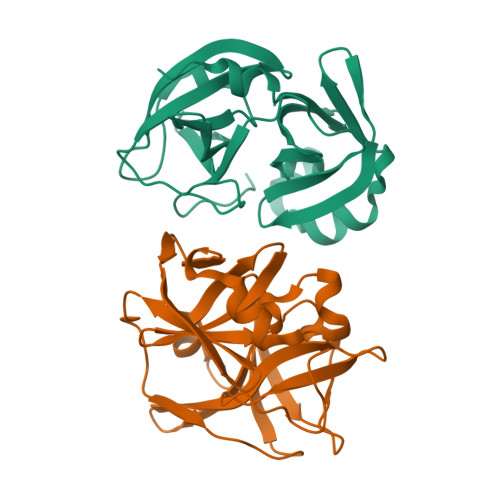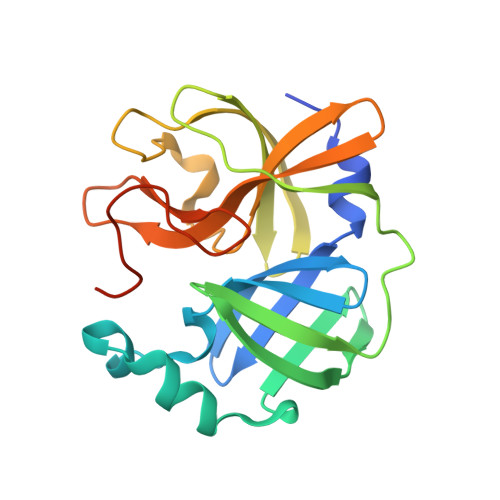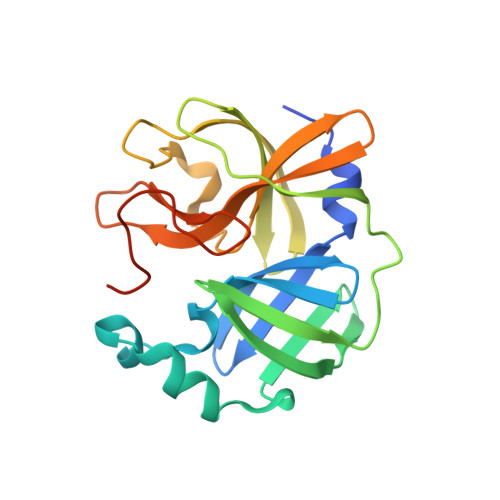Visualizing the Active Site Oxyanion Loop Transition Upon Ensitrelvir Binding and Transient Dimerization of SARS-CoV-2 Main Protease.
Kovalevsky, A., Aniana, A., Coates, L., Ghirlando, R., Nashed, N.T., Louis, J.M.(2024) J Mol Biology 436: 168616-168616
- PubMed: 38762033
- DOI: https://doi.org/10.1016/j.jmb.2024.168616
- Primary Citation of Related Structures:
8V7T, 8V7W, 8V8E, 8V8G - PubMed Abstract:
N-terminal autoprocessing from its polyprotein precursor enables creating the mature-like stable dimer interface of SARS-CoV-2 main protease (MPro), concomitant with the active site oxyanion loop equilibrium transitioning to the active conformation (E*) and onset of catalytic activity. Through mutagenesis of critical interface residues and evaluating noncovalent inhibitor (ensitrelvir, ESV) facilitated dimerization through its weak binding to MPro, we demonstrate that residues extending from Ser1 through Glu14 are critical for dimerization. Combined mutations G11A, E290A and R298A (MPro TM ) restrict dimerization even upon binding of ESV to monomeric MPro TM with an inhibitor dissociation constant of 7.4 ± 1.6 µM. Contrasting the covalent inhibitor NMV or GC373 binding to monomeric MPro, ESV binding enabled capturing the transition of the oxyanion loop conformations in the absence of a reactive warhead and independent of dimerization. Characterization of complexes by room-temperature X-ray crystallography reveals ESV bound to the E* state of monomeric MPro as well as an intermediate approaching the inactive state (E). It appears that the E* to E equilibrium shift occurs initially from G138-F140 residues, leading to the unwinding of the loop and formation of the 3 10 -helix. Finally, we describe a transient dimer structure of the MPro precursor held together through interactions of residues A5-G11 with distinct states of the active sites, E and E*, likely representing an intermediate in the autoprocessing pathway.
Organizational Affiliation:
Neutron Scattering Division, Oak Ridge National Laboratory, 1 Bethel Valley Road, Oak Ridge, TN, 37831, USA. Electronic address: kovalevskyay@ornl.gov.



















